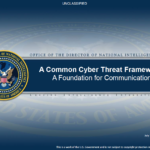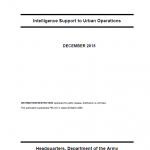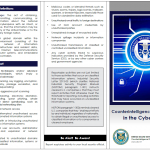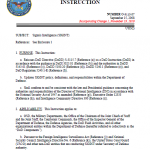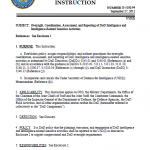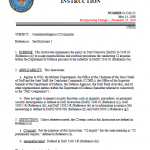In 2004, the Government of Canada issued its first National Security Policy (NSP), Securing an Open Society, to ensure that Canada would be prepared for and could respond to future threats. Recognizing that threats to national security are beyond the capacity of individuals, communities or provinces to address alone, the NSP envisaged greater integration and more strategic co-ordination of key security functions, particularly those related to intelligence collection, threat assessments and emergency preparedness through the implementation of a strategic framework and an action plan. To make substantive improvements in integration and co-ordination with regard to terrorist threats, the Canadian Security Intelligence Service (CSIS) and the Royal Canadian Mounted Police (RCMP), in co-operation with the Canadian Association of Chiefs of Police (CACP), are developing National Counter-Terrorism Intelligence Requirements (NCTIR). The NCTIR is envisaged as an integral component of a broader national strategy involving training, information-sharing and a co-ordinated response to terrorist threats involving the whole of government.
537 search results for "intelligence requirements"
Office of the Director of National Intelligence
Office of the Director of National Intelligence Common Cyber Threat Framework
U.S. Army
(U//FOUO) U.S. Army Intelligence Analysis Manual
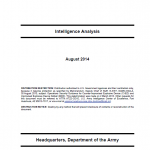
ATP 2-33.4 provides information on how intelligence personnel conduct intelligence analysis in support of unified land operations. It describes approaches used to conduct intelligence analysis and describes how intelligence analysis assists commanders with understanding the complex environments in which Army forces conduct operations.
Office of the Director of National Intelligence
Office of the Director of National Intelligence Countering Foreign Intelligence Threats Implementation and Best Practices Guide
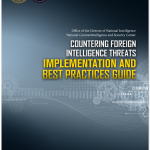
The National Counterintelligence and Security Center (NCSC) is charged with leading and supporting the counterintelligence (CI) and security activities of the U.S. government, the U.S. Intelligence Community, and U.S. private sector entities that are at risk of intelligence collection, penetration, or attack by foreign adversaries and malicious insiders. The capabilities and activities described in this Guide are exemplars of program components delineated as requirements in numerous strategies, policies, and guidelines.
National Guard
National Guard White Paper: The Role of National Guard Intelligence During Civil Disturbances
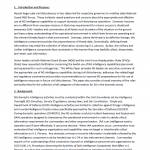
Recent large-scale civil disturbances in two states led the respective governors to mobilize state National Guard (NG) forces. These incidents raised questions and concerns about the appropriate and effective use of NG intelligence capabilities to support domestic civil disturbance operations. Domestic missions are no different from overseas missions in that a key requirement for mission success is situational awareness (SA)—leaders and commanders at all levels must be aware of the situation on the ground and have a deep understanding of the operational environment in which their forces are operating and the inherent threats faced in that environment. Overseas, where the threat is by definition foreign, the intelligence component provides the preponderance of threat data. Domestically, defining threat information may entail the collection of information concerning U.S. persons. By law, the military and civilian intelligence components face constraints in the manner they may lawfully collect, disseminate, and retain such information.
U.S. Army
(U//FOUO) U.S. Army FM 2-22.2 Counterintelligence
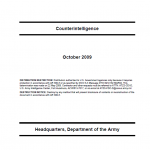
CI focuses on negating, mitigating, or degrading the foreign intelligence and security services (FISS) and international terrorist organizations (ITO) collection threat that targets Army interests through the conduct of investigations, operations, collection, analysis, production, and technical services and support.
U.S. Army
U.S. Army Intelligence Support to Urban Operations
U.S. Navy
Restricted U.S. Navy Intelligence Support to Naval Operations Manual NWP 2-01
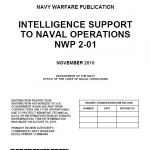
NWP 2-01 is a comprehensive reference detailing the intelligence support available to the naval commander in the successful planning and execution of operations. NWP 2-01 is by nature a refresher and ready resource for the Information Dominance Corps (IDC) intelligence professionals, information warfare officers, and cryptologic technicians; however, the target audience is the operational commander. The publication’s length and content are specifically tailored to ensure a practical and valuable reference for the operational decision maker. NWP 2-01 is the foundation for a series of proposed follow-on Navy tactics, techniques, and procedures (NTTP) publications.
United Kingdom
U.K. Parliament Intelligence and Security Committee Report on GCHQ Mass Surveillance
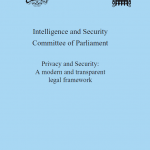
The leak by Edward Snowden of stolen intelligence material in June 2013 led to allegations regarding the UK Agencies’ use of intrusive capabilities – in particular those relating to GCHQ’s interception of internet communications. This Committee investigated the most serious of those allegations – that GCHQ were circumventing UK law – in July 2013. We concluded that that allegation was unfounded. However, we considered that a more in-depth Inquiry into the full range of the Agencies’ intrusive capabilities was required – not just in terms of how they are used and the scale of that use, but also the degree to which they intrude on privacy and the extent to which existing legislation adequately defines and constrains these capabilities.
Department of Defense
Defense Personnel Security Research Center Counterintelligence Reporting Essentials (CORE) Guide
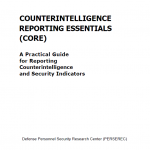
Supervisors and coworkers are willing to report on behaviors that have a clear connection to security, such as transmitting classified documents to unauthorized personnel, but they are unwilling to report on colleagues’ personal problems, such as alcohol abuse. Because it was difficult to discern which reporting requirements were clearly related to security, there was very little reporting. PERSEREC, in collaboration with counterintelligence professionals, developed a clear, succinct list of “Coworker Reporting Essentials” (CORE) behaviors that could pose a possible threat to national security and thus should be reported if observed. The draft CORE was reviewed and edited by counterintelligence professionals at the Counterintelligence Field Activity (CIFA), and was coordinated by the DoD Investigative Working Group (IWG).
Department of Defense
DoD Cloud Computing Security Requirements Guide (SRG) Version 1
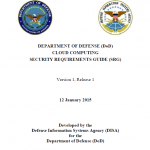
Cloud computing technology and services provide the Department of Defense (DoD) with the opportunity to deploy an Enterprise Cloud Environment aligned with Federal Department-wide Information Technology (IT) strategies and efficiency initiatives, including federal data center consolidation. Cloud computing enables the Department to consolidate infrastructure, leverage commodity IT functions, and eliminate functional redundancies while improving continuity of operations. The overall success of these initiatives depends upon well executed security requirements, defined and understood by both DoD Components and industry. Consistent implementation and operation of these requirements assures mission execution, provides sensitive data protection, increases mission effectiveness, and ultimately results in the outcomes and operational efficiencies the DoD seeks.
Department of Homeland Security
(U//FOUO) DHS Intelligence Assessment: Malicious Cyber Actors Target US Universities and Colleges
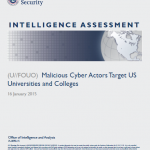
Malicious cyber actors have targeted US universities and colleges with typical cybercrime activities, such as spear phishing students and faculty with university-themed messages, creating fake university websites, and infecting computers with malicious software, likely in an attempt to gain access to student and faculty e-mail and bank accounts. We have no indication that cybercriminals target university systems and users more than any other cybercrime victims.
National Counterintelligence Executive
National Counterintelligence Executive Unauthorized Disclosures of Classified Information Training Course
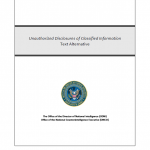
This course identifies and discusses employees’ responsibilities for safeguarding classified information against unauthorized disclosures. This course also outlines the criminal and administrative sanctions which can be imposed for an unauthorized disclosure. While there are multiple categories of unauthorized disclosures, this course will focus on unauthorized disclosures to the media due to the significance of the damage these leaks have caused to both the Intelligence Community (IC) and national security.
U.S. Army
(U//FOUO) U.S. Army Military Intelligence Battalion Interrogation Manual
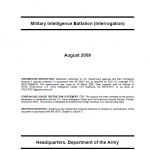
TC 2-22.304 provides doctrinal guidance concerning the military intelligence (MI) battalion (interrogation). The TC complements existing doctrine, in particular FM 2-22.3, and incorporates lessons learned from recent operations. The MI battalion (interrogation) is specifically designed to operate within a joint interrogation and debriefing center (JIDC). The battalion command, staff, personnel, and equipment form the nucleus of the JIDC. The battalion is task-organized and augmented with additional personnel from other Services, Government civilians, and civilian contractors to form a JIDC.
Defense Security Service
Defense Security Service Counterintelligence Threats in the Cyberspace Pamphlet
U.S. Army
Restricted U.S. Army All Source Intelligence Technician Officer Training Standards
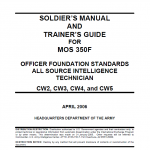
This publication is for officers holding military occupational specialty (MOS) 350F and their trainers or first-line supervisors. It contains standardized training objectives, in the form of task summaries, which support unit missions during wartime. Officers holding MOS 350F should be issued or have access to this publication. It should be available in the officer’s work area, unit learning center, and unit libraries. Trainers and first-line supervisors should actively plan for officers to have access to this publication.
U.S. Air Force
National Air and Space Intelligence Center Ballistic & Cruise Missile Threat Report
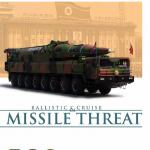
Many countries view ballistic and cruise missile systems as cost-effective weapons and symbols of national power. In addition, they present an asymmetric threat to US airpower. Many ballistic and cruise missiles are armed with weapons of mass destruction. Ballistic and cruise missiles present a significant threat to US and Allied forces overseas, and to the United States and its territories. Missiles are attractive to many nations because they can be used effectively against an adversary with a formidable air defense system, where an attack with manned aircraft would be impractical or too costly. In addition, missiles can be used as a deterrent or an instrument of coercion. Missiles also have the advantage of fewer maintenance, training, and logistic requirements than manned aircraft. Even limited use of these weapons could have devastating consequences because missiles can be armed with chemical, biological, or nuclear warheads.
Joint Chiefs of Staff
Restricted Joint Chiefs of Staff Manual: Intelligence Planning
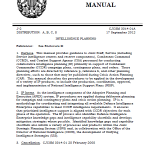
This manual provides guidance to Joint Staff, Service (including Service intelligence centers and reserve components), Combatant Command (CCMD), and Combat Support Agency (CSA) personnel for conducting collaborative intelligence planning (IP) primarily in support of Combatant Commander (CCDR) campaign plans, contingency plans, and orders.
Department of Defense
(U//FOUO) DoD Instruction: Signals Intelligence (SIGINT)
Department of Defense
(U//FOUO) DoD Instruction: Intelligence Oversight, Coordination, Assessment and Reporting
Department of Defense
(U//FOUO) DoD Instruction: Counterintelligence (CI) Activities Supporting Research, Development, and Acquisition
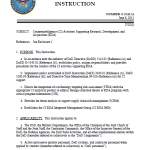
The CI mission in RDA informs the DoD Components and supporting CDCs of foreign collection threats and detects FIE targeting of defense-related technology. The CI support enables RDA program personnel to implement countermeasures and enables CI to develop activities that negate, counter, penetrate, or exploit an FIE.
Department of Defense
(U//FOUO) DoD Directive: Counterintelligence (CI)
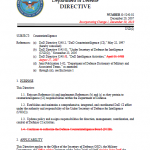
Defense CI activities shall be undertaken as part of an integrated DoD and national effort to detect, identify, assess, exploit, penetrate, degrade, and counter or neutralize intelligence collection efforts, other intelligence activities, sabotage, espionage, sedition, subversion, assassination, and terrorist activities directed against the Department of Defense, its personnel, information, materiel, facilities, and activities, or against U.S. national security.
Department of Defense
(U//FOUO) DoD Instruction: Counterintelligence (CI) Inquiries
U.S. Marine Corps
(U//FOUO) U.S. Marine Corps Human Intelligence Exploitation Team (HET) Operations in Iraq Lessons Learned Report
HET is viewed as a highly valuable and effective intelligence generating asset which, in conjunction with other intelligence sources, provides a significant amount of actionable intelligence during operations in Iraq. “The HET teams produced more reporting … than any other intel asset we have out there.” “HETs have been the pointy tip of the spear in this counterinsurgency fight. Two-thirds of MNF-W operations are directly driven by HET operations.” Key observations from this collection include the following.
National Geospatial-Intelligence Agency
National Geospatial-Intelligence Agency Incorporating Human Geography into GEOINT Student Guide
This course provides an overview of incorporating Human Geography into GEOINT at NGA, with the intention of providing a foundation of the knowledge, skills, and application capabilities for the NGA GEOINT analyst.

